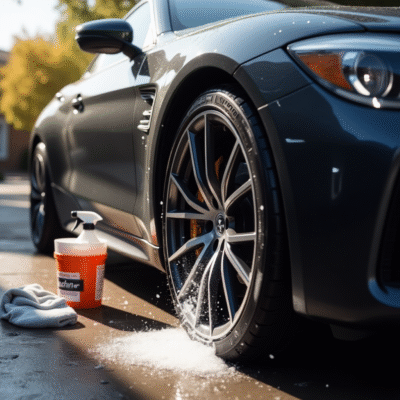A car accident is overwhelming, even more so when it’s not your fault. Whether you’re rear-ended at a stoplight or T-boned by someone who ran a red light, the aftermath can be confusing. From dealing with insurance companies to protecting your legal rights, there are crucial steps to follow.
This guide explains exactly what to do after a car accident not your fault, helping you take control of the situation and avoid costly mistakes.
1. Check for Injuries and Ensure Safety
Prioritize Health First
The first thing to do is check for injuries. Look at yourself, your passengers, and others involved. If anyone is hurt, call emergency services immediately.
Move to a Safe Area
If the accident is minor and your vehicle is drivable, move it to the side of the road. This prevents further collisions and keeps you safe.
Use Hazard Lights
Turn on your hazard lights to alert other drivers. If available, set up warning triangles or flares to prevent further incidents.
2. Call the Police
Even if the accident seems small, always call the police.
Get an Official Police Report
Police officers will document the scene, assess damages, and speak with both drivers. Their report is vital for insurance claims and legal matters.
Cooperate Without Admitting Fault
Tell the officers exactly what happened, but don’t say anything that could be interpreted as accepting blame. Let them draw their own conclusions based on facts.
3. Exchange Information with the Other Driver
Gather details from all parties involved in the accident. This includes:
- Full names and contact information
- Driver’s license numbers
- License plate numbers
- Insurance provider and policy number
- Vehicle make, model, and color
Do not discuss fault at the scene. Keep the conversation factual and professional.
4. Document the Scene Thoroughly
Your smartphone can become your most valuable tool after an accident.
Take Photos and Videos
Capture the damage to all vehicles from multiple angles, the surrounding area, traffic signs, skid marks, and any injuries.
Record Witness Information
If there are any bystanders or witnesses, get their names and phone numbers. Their testimony may prove helpful if there’s a dispute about fault later on.
5. Notify Your Insurance Company
Even though you’re not at fault, it’s important to inform your own insurance provider.
Why You Should Call Them
- They can help process the claim
- They’ll document the accident details
- They may offer coverage such as collision or uninsured motorist protection
Be clear and honest. Provide all documentation, including police reports and photos.
6. File a Claim with the At-Fault Driver’s Insurance
This is called a third-party claim, and it holds the other driver’s insurance responsible.
What You Can Claim
- Vehicle repair or replacement
- Medical bills
- Rental car costs
- Lost wages
- Pain and suffering (depending on your state’s laws)
Avoid giving recorded statements to the other driver’s insurer without consulting a lawyer.
7. Seek Medical Attention Immediately
Even if you feel fine, it’s wise to get checked by a doctor within 24–48 hours.
Hidden Injuries Are Common
Symptoms of whiplash, concussions, or internal injuries may not appear right away. Medical records help link your injuries to the accident.
Keep Medical Records
Document every doctor visit, diagnosis, and treatment. These will be crucial when seeking compensation.
8. Consider Hiring a Personal Injury Lawyer
Legal representation isn’t always required—but in many cases, it’s a smart move.
When to Hire a Lawyer
- You’ve suffered serious injuries
- There’s a dispute over fault
- The insurance company offers a low settlement
- Your claim is denied or delayed
Most personal injury attorneys offer free consultations and work on a contingency basis, meaning they only get paid if you win.
9. Keep All Records and Documentation
You’ll need strong records to support your insurance claim or any legal proceedings.
Organize Everything
Keep a file (physical or digital) that includes:
- The police report
- All medical bills and diagnoses
- Car repair estimates and receipts
- Communication with insurance companies
- Photos and witness details
Having everything in one place makes follow-ups and legal processes much easier.
10. Be Cautious with Settlements and Follow Up
Insurance companies are businesses. Their goal is often to settle quickly and cheaply.
Don’t Rush into a Settlement
The first offer may not cover all your expenses. Don’t feel pressured—review it carefully, or better yet, have a lawyer do so.
Be Persistent
Follow up regularly with insurance adjusters. Keep notes of each conversation, including dates and names.
Final Thoughts
Knowing what to do after a car accident not your fault empowers you to take the right steps, protect your rights, and recover your losses. From ensuring safety and gathering evidence to filing a third-party claim and possibly seeking legal advice, these actions can make a major difference in the outcome of your case.
You didn’t cause the accident—but you are responsible for how you respond to it. Stay calm, stay smart, and be proactive about protecting yourself.





